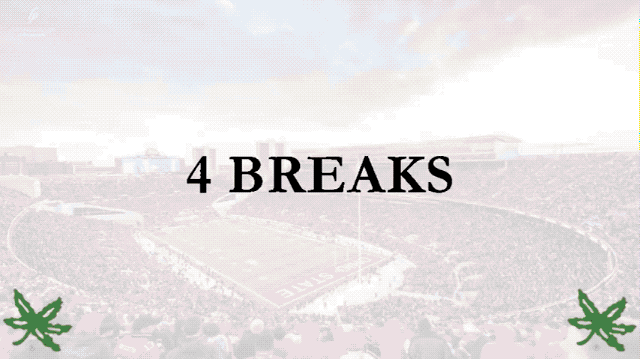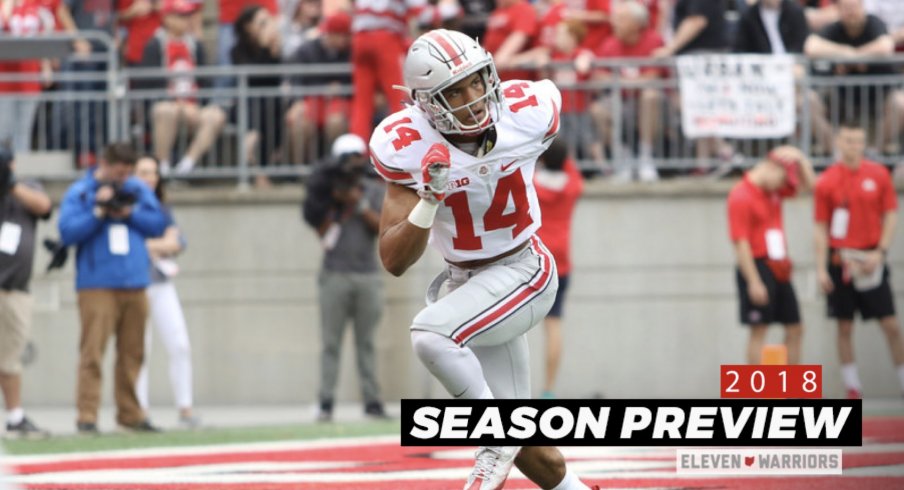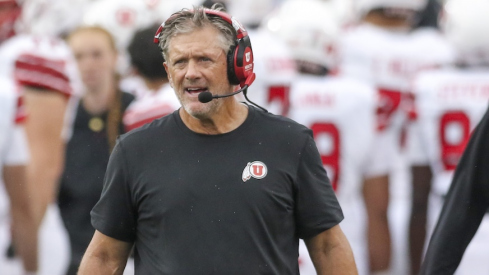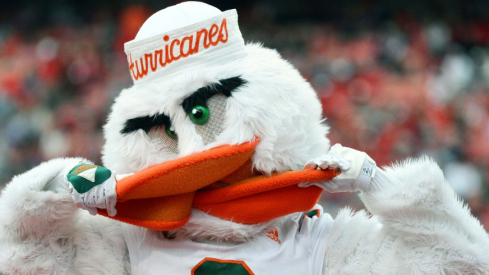"The field safety is probably our No. 1 concern on our team right now. We’re just not quite sure who that is." - Urban Meyer following the 2018 Ohio State Spring Game.
With a quarterback competition squarely in the rear-view mirror and clear favorites establishing themselves at left tackle, center, and cornerback, the biggest remaining question on Ohio State's depth chart is the battle to replace Damon Webb. Though often overlooked next to the four first-round draft picks with whom he played in the Buckeye secondary, Webb played a critical role opposite stars like Malik Hooker and Denzel Ward in his two seasons as a starter.
Though Hooker's replacement, Jordan Fuller, turned heads with a breakout campaign last fall, Webb finished as the team leader with five interceptions and was third in tackles, earning third-team All-Big Ten Conference honors that seemed to surprise even the most ardent OSU supporters. Those same fans may be even more surprised that Webb's replacement is still yet to be named with less than two weeks until the season officially kicks off against Oregon State.
As interim head coach Ryan Day noted in a statement last week, "there has been excellent competition to determine who will be the starter opposite Fuller, between Isaiah Pryor and Jahsen Wint." Though others like Brendon White, Amir Riep and true freshmen Josh Proctor and Marcus Hooker had been in the mix during spring practice, Pryor and Wint appear to be the most likely successor to Webb at Field Safety.
Recruitniks may assume the job is still Pryor's to lose, given his size and pedigree, earning a four-star rating out of the venerated IMG Academy. But though Wint was largely forgotten in the class of 2016, the unique nature of the position has allowed him to fight for major playing time.
In Greg Schiano's Buckeye defense, the two safeties align based on where the ball is aligned between the hashes. Fuller, as the boundary safety, lines up to the short side of the field and is often compared to a traditional 'free safety,' while the field safety aligns to the wide side, following the SAM linebacker and plays the role many would refer to as the 'strong safety.'
"At both spots, you got to be able to physically hold up in coverage vs. a tight end – that might be a matchup from a physical standpoint that you might be minus to – and you got to make sure that you got the speed and the agility and coverage skills to cover a slot receiver, that might have the quick skill set as opposed to the size skill set. And oh, by the way, they got two backs in the backfield and a tight end, you better come up and support the run," new safeties coach Alex Grinch said last March during spring practice. "So it’s a heck of a job description. It’s just becoming that way as football becomes more of a spread-out game."
As Webb showed last season, Grinch wasn't kidding about the diversity of techniques required at the position, given the variety of offenses Ohio State faces in the Big Ten each season. For instance, Buckeye safeties were forced to act as a traditional thumper between the hashes, essentially acting as a fourth linebacker and filling a run gap.
But though the Falcon, as Grinch calls it, must be able to play in the box against traditional, two-back offenses like Wisconsin or Michigan, their biggest responsibility is making plays in space. With that in mind, it should come as no surprise that Fuller and Webb finished first and second on the team, respectively, in solo tackles last fall.
"It’s becoming more and more of a unique position," Grinch added in March. "The big safety, the in-the-box safety, what used to be described as a strong safety is kind of finding its way out of college football because of the lack of ability to cover in space."
More often than not, that coverage in space translates to making plays on a quick screen to a playmaker in space, forcing the safety to make a quick, decisive movement that limits the runner's yardage after the catch.
To make plays like these in space, Ohio State safeties must be able to change direction quickly, and with no wasted motion. To drill this technique, Grinch works with them on the four breaks needed to reroute their path quickly, but under control.
Not only are they capable of breaking in either direction, they practice doing so with both their shoulders square to the line as well as turned away from the play. Most importantly, they practice keeping their feet under their upper body and maintaining good balance throughout the break.

As you can see above, that effort is often complicated by Schiano's desire to line up in the same, '4-3 over' alignment with both safeties deep on first and second down. Once the ball is snapped, however, the defense rotates into the called play, able to run both man and pattern-matching coverages from the same pre-snap look.
But unlike traditional zone defenses of the past that asked the safeties to patrol the same patch of grass on every snap, Webb was forced to play man-coverage quite often. Since he was originally recruited as a cornerback, this type of play came naturally to him.
In the example showing how Ohio State plays Cover-1 below, the boundary safety is given the responsibility of playing centerfield while the athletic WILL linebacker, Jerome Baker, picks up the tight end to the boundary. The SAM is responsible for covering the back offset to his side, should he release on a pass route, leaving Webb one-on-one with Penn State star DaeSean Hamilton on the corner route.
It's important to note that Webb's technique from the 2-deep shell forces him to play "catch" technique in man-coverage, not the "press" style shown by the corners on the line of scrimmage. In catch technique, the defender mirrors the movement of the receiver from a depth of about eight yards, looking to re-route the receiver by interrupting their path.
Initially, the defender will anticipate the route coming his way based on the depth and timing of the quarterback's drop. Once it's clear that the QB isn't throwing off a quick, three-step drop, the defender slowly "absorbs" the route and close any space between he and the receiver.

While such a technique does give up the quick, underneath pass right away, it's valuable to the Buckeye safeties for a couple reasons. First, since the OSU corners are often playing a press technique at the line, the next defender must be at a deeper depth to avoid rub routes from picking each other off. Second, however, is this is how they're already being taught to play receivers in a pattern-matching coverage like Quarters, meaning it's one of the few pieces that, once mastered, can be applied quite often at the position.
As you can see in both practice clips, Fuller is shown executing the same techniques employed by Webb on the other side of the field. According to Grinch, that's for good reason.
"In terms of their overall responsibilities, they’re really mirror positions, and so we teach it as such," Grinch told the media in March. "And we want to make sure guys aren’t locking into 'Well, I’m a falcon to the field, or a strong safety to the boundary, and that’s the only spot I know.' No, we want to make sure we’re dual-training and cross-training those guys, so we can get the best two on the field."
That versatility is necessary when opponents try to build game plans that remove a star like Fuller from the play. As often happened with Hooker the year prior, conference rivals began moving bodies to the short side of the field, forcing the boundary safety to play a tight end in man while the QB looked to attack the open space to the field.
Webb proved to be no slouch when playing the free safety role as well, making the (later overturned) play above as well as picking off a deep ball against Michigan State that he'd return 47 yards a few weeks later.
Excelling in either safety position isn't easy, and although Pryor and Wint appear to have separated themselves from the pack in the race for the starting Falcon role, that doesn't mean the Buckeyes are set at the position. Webb's versatility allowed his teammates in the secondary to become stars and was often only highlighted on the rare occasion in which he failed to live up to his responsibility. Whoever lines up there on opening day will have big shoes to fill.



